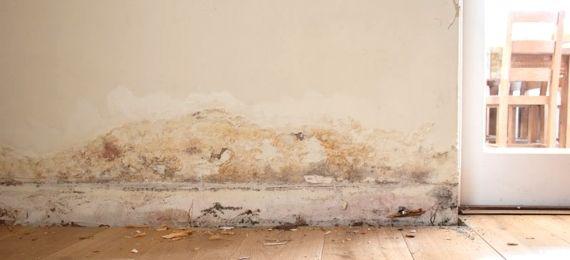
The Silent Threats: Damp and Mould
Damp and mould aren't just unsightly—they're silent threats that can have serious implications for both your health and your home's structural integrity.
Health Implications
- Respiratory Problems: Mould releases spores into the air, which can be inhaled and cause or exacerbate conditions like asthma, bronchitis, and other respiratory issues.
- Allergic Reactions: Common symptoms include sneezing, skin rashes, watery eyes, and a runny nose.
- Infections: Prolonged exposure can weaken your immune system, making you more susceptible to infections.
Structural Damage
- Weakened Foundations: Damp can compromise the structural integrity of your home, leading to cracks, leaks, and even subsidence over time.
- Damage to Belongings: Mould can ruin furniture, clothing, and personal items, often beyond repair.
- Electrical Risks: Moisture increases the risk of electrical faults, which can lead to fires or electrocution.
Identifying Damp and Mould
Being proactive starts with recognition. Here are signs to watch for:
- Musty Odours: A persistent, damp smell is often the first indicator.
- Discolouration: Black, green, or brown spots on walls, ceilings, or around windows.
- Peeling Wallpaper or Paint: Moisture can cause finishes to bubble or peel away.
- Condensation: Excessive moisture on windows or cold surfaces.
Your Rights as a Tenant
Under the Landlord and Tenant Act 1985, landlords have a legal obligation to ensure that properties are fit for human habitation. This includes addressing issues like damp and mould.
Steps to Take
- Document Everything
- Take photographs of affected areas.
- Keep a diary of damp-related issues and any health problems that arise.
- Notify Your Landlord
- Write a formal letter or email detailing the issues.
- Request a timeline for repairs.
- Follow Up
- If there's no response, send a reminder or consider reaching out through different channels.
- Seek Professional Advice
- If your landlord fails to act, you have the right to seek legal assistance.
- DisrepairLegal.co.uk specializes in helping tenants like you understand and exercise your rights.
Taking Care of Your Health
While addressing the root cause is crucial, here's how you can mitigate health risks in the meantime:
- Improve Ventilation
- Open windows regularly.
- Use extractor fans in the kitchen and bathroom.
- Control Moisture Levels
- Use a dehumidifier.
- Wipe down condensation on windows and surfaces.
- Avoid Mould Growth
- Clean affected areas with mould-removing solutions.
- Dispose of items severely affected by mould.
Why Addressing Damp and Mould Matters
Ignoring these issues is like ignoring a leak in a dam—it might seem small now, but over time, the consequences can be catastrophic.
Personal Well-being
Your health is paramount. Prolonged exposure can lead to chronic health conditions that affect your quality of life.
Financial Impact
The longer damp and mould persist, the more expensive the repairs can become. Addressing the problem early can save money in the long run.
Legal Standing
Taking action demonstrates that you've been proactive, which can be beneficial if legal proceedings become necessary.
How DisrepairLegal.co.uk Can Help
Navigating housing issues can be overwhelming, but you don't have to do it alone.
- Expert Advice: Our team understands housing law inside out.
- Personalized Support: We listen to your situation and tailor our assistance accordingly.
- Advocacy: We'll help you hold your landlord accountable and ensure your living conditions meet legal standards.
Visit DisrepairLegal.co.uk to learn more about how we can assist you.
Looking Ahead
Addressing damp and mould is not just about fixing a property issue—it's about safeguarding your health and restoring peace of mind. By taking decisive action, you're not only improving your current living conditions but also setting a precedent for better housing standards.
Additional Insights
- Preventative Measures for the Future
- Regular Inspections: Encourage periodic checks to catch problems early.
- Stay Informed: Understand the common causes of damp, such as rising damp, penetrating damp, and condensation.
- Community Support: Engage with tenant associations for collective bargaining power.
- Environmental Perspective
- Sustainability: Damp homes require more energy to heat, contributing to higher carbon emissions.
- Healthier Living Spaces: Promoting dry, mould-free homes aligns with broader public health goals.
Your home is more than just four walls and a roof—it's where life happens. Don't let damp and mould steal that joy from you. Take the first step toward a healthier living environment today.
We're here to help. Reach out to us at DisrepairLegal.co.uk.